
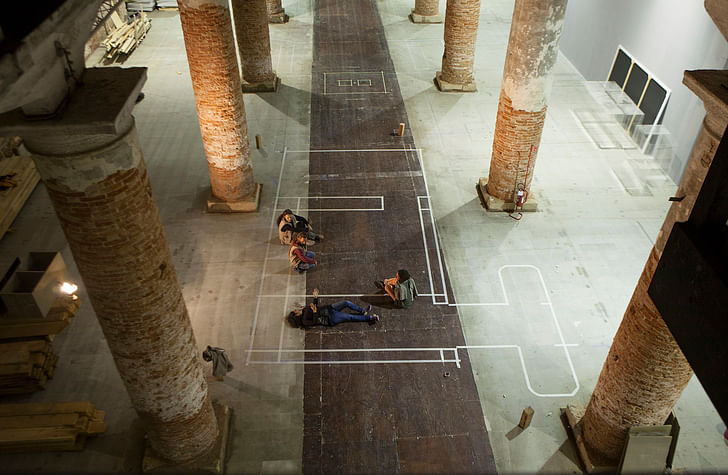
In advance of the 2016 Venice Biennale, we've spoken with the curators behind a few select pavilions to check in on the status of their exhibitions. For this feature, we spoke with Anupama Kundoo about her project, Building Knowledge.
Known for her socially-engaged housing initiatives, Anupama Kundoo’s practice is a natural fit for Alejandro Aravena’s Biennale theme, Reporting from the Front. Combining material research and strategic thinking, Kundoo and her studio (based in both Spain and India) have designed homes that are quick to construct, affordable, and generate income for the local community.
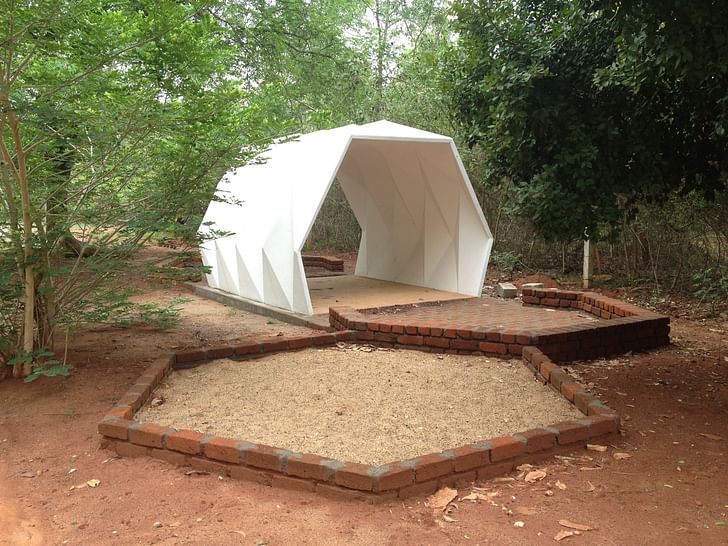
Kundoo studied at the Sir J.J. College of Architecture at Bombay University before receiving her doctoral degree from TU Berlin in 2008. She has taught at numerous universities and currently is a professor at the UCJC in Madrid, where she is also the Chair of the Affordable Habitat masters program. This isn’t her first visit to Venice either, having exhibited at several Biennale’s in the past.
We got in touch with Kundoo to hear a bit about what motivates her practice and what to expect from Building Knowledge.

You’ve been invited by Alejandro Aravena to present work in the Arsenale for this year’s Biennale. I know you’ve also exhibited at past Biennales as well. What’s your experience been in Venice? How do you see Reporting from the Front differing from prior Biennales?
In a nutshell, Alejandro talks about the many battles that have to be fought to improve the living conditions and environment for all. My response is Building Knowledge: an inventory of strategies, as I believe that knowledge/consciousness must be ahead of mindless action, which is destructive. Battles are about duality. When duality is integrated there is enrichment, progress, evolution. This means a quest for knowledge/consciousness. My 25 year practice will be shown as an inventory of strategies showing that projects (fruits) are the result of knowledge (roots).It is interesting to bring real struggles of the common man in the built environment into the Biennale's global architectural discussions
It is interesting to bring real struggles of the common man in the built environment into the Biennale's global architectural discussions. I look forward to seeing all such responses in one concentrated curated exhibition.
It’s hard to say how it will differ from previous Biennales. It's always completely different. I am looking at this as an entirely new thing, without any comparison with the previous. It's all about the theme and we are approaching this as a fresh response.
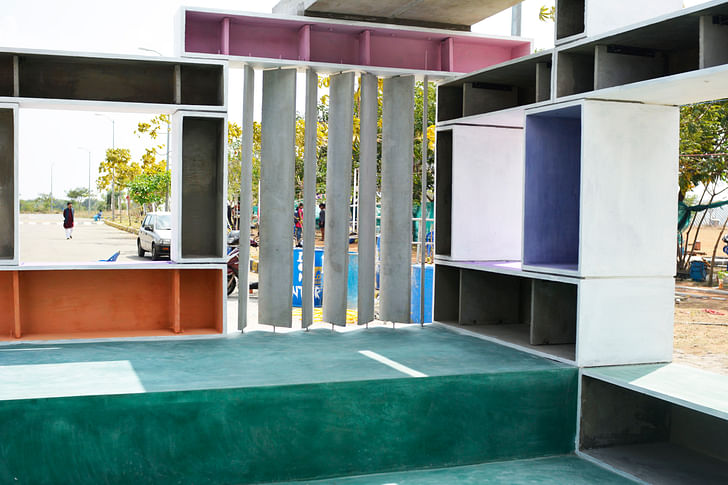
Building Knowledge will have several components, including a full prototype home, if I’m correct. Can you walk us through these different aspects of the project?
I have arranged the different components by setting up a confrontation of the dualities that need to be integrated in the architectural profession, rather than fighting against each other. Drawn up on the left hand side as the visitor walks through the Arsenale are the spatial, non-material researches including space, form, climate, site context, etc. representing ‘Spirit’ through 1:50 models of projects from my practice. On the right hand side, we display our research and experimentation with ‘Matter’ through physical samples of material research undertaken through the 25 years of our practice and videos of people’s engagement in this quest.
The 1:1 scale Full Fill Home prototype and EASY WC sit at the centre of these, straddling the Arsenale walkway, suggesting the potential for synthesis—to create easily fabricated, resilient homes and toilets—if the dualities, to the left and right, work together. The design is suitable for all, not just for the poor!
These [prototypes] look at high-speed delivery of beautiful, affordable houses with minimal environmental impact. These can be built within a week, countering the notion that urban housing is tedious and unachievable. These homes can provide instant shelter where needed, such as remote or disaster relief areas. But they work equally well for youth hostels, student housing and guest houses in environmentally sensitive locations. Full Fill Homes offer affordability through efficiency and inclusivity. The design is suitable for all, not just for the poor!
The principle difference is centred around the material, ferrocement, and the appropriate development of this building technology to include more local participation and significantly less quantities of materials, especially materials with high-embodied energy. Several of the environmentally-friendly materials like bamboo and earth are not yet able to address problems of high density urbanisation in currently sprouting megacities that are sprouting at an unprecedented pace.
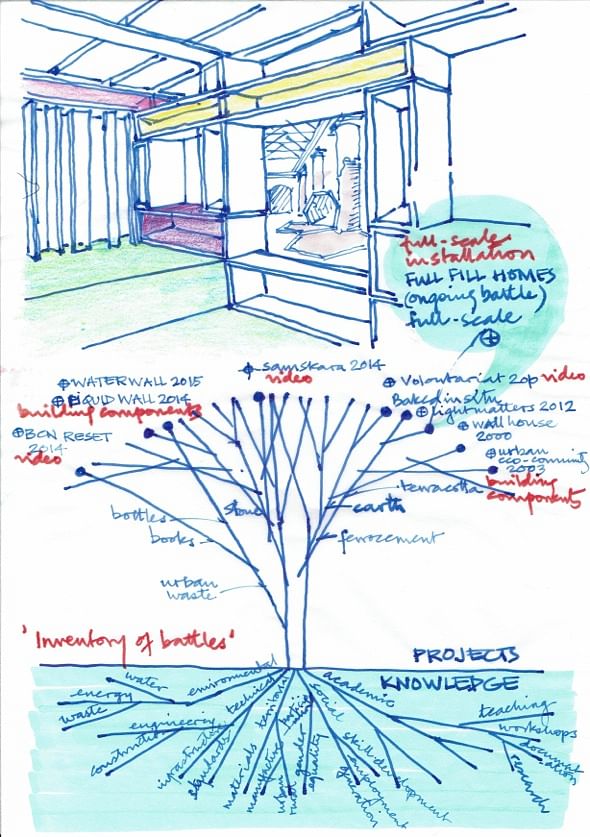
This kind of context is where the real challenge lies today, where the need of the hour is high-speed and affordable housing solutions, and the use of minimal material, minimum energy, with the least negative environmental impact and maximum opportunities for people’s own participation in their house. Unlike reinforced concrete, ferrocement is very thin, never more than 25 millimeters thick. Chicken mesh, welded mesh and small diameter steel reinforcement are used to give tensile strength to the cement, significantly reducing the quantities of high-embodied-energy materials used in the construction and reducing the weight of the final product, which is then lighter and easier to transport. It is a material that still remains underutilised and its advantageous properties (including seismic resistance) deserve serious consideration, given the particular nature of rapid urbanisation and its socio-economic and environmental impact.
In the case of the ‘Full Fill Homes,’ the ferrocement elements are produced in the backyards of masons’ homes to provide them with additional income, rather than in factories, thereby reducing costs while helping the local economy. The manufacturing process is easy to learn and takes less than 48 hours to complete, plus 3-4 weeks time for ‘curing’ the elements after which they can be transported. A range of window, doors, roof elements and other necessary building components are all produced in ferrocement, negating the need for any complex hardware. We simply can’t afford to keep building the way we do.
The building system is an assembly of large interlocking blocks where large voids created within the blocks to strengthen the thin ferrocement elements efficiently become the complete storage solution for the homeowner, accommodating everything from clothes, to books, to kitchen utensils – even the kitchen sink itself – so that all furniture becomes redundant. The space within the small house can then remain unfurnished, offering more space for the occupants and saving on the additional cost and time involved in furnishing homes. The storage units are emphasized through use of bright colours, contrasting attractively against the plain white of the walls.
We’re not just talking about affordability in terms of money here; by affordability we also mean affordable in environmental terms. We are many more people now on the planet; everyone migrating to cities and given our resource crunch, we simply can’t afford to keep building the way we do. Our effort is to find alternative solutions and action them.
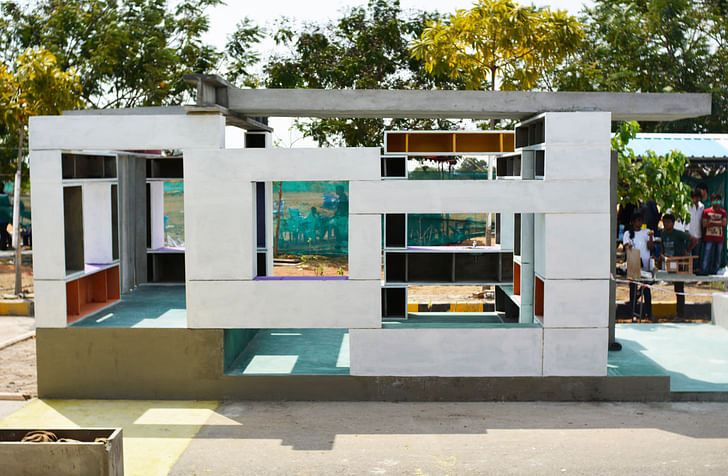
What happens to the installation after the Biennale?
The process doesn’t just begin or end with the installation at the Venice Biennale. We have procured the material from last year's German pavilion at the Venice Art Biennale, and through collaboration with a team of local activists [named] Rebiennale, we are engaging local people in the construction and also the reconstruction of its afterlife. After the exhibition we will return and take responsibility to transform our installation into a relevant new project that is useful to the homeless people in Marghera nearby through a participation process.
This double recycling project will be developed through two workshops offered through the University Camilo Jose Cela in Madrid. A team of Indian craftsmen will interact with local craftsmen in a technology transfer program in Venice. The process doesn’t just begin or end with the installation at the Venice BiennaleThey will also visit the Technical University of Berlin where some more experimentation and testing will take place under the Chair of Mike Schlaich, who will help us optimise our designs for application in developed as well as developing countries. So while the structure itself will be left behind in a new application in the Venice area, the knowledge generated in the process through interdisciplinary and intercultural collaborations will lead to the optimised design of Full Fill Homes that will be ready to be strength tested, and brought into the mainstream.
It’s a good way to spend money generated for exhibitions, isn’t it? Where the money spent goes a long way to finance research on affordable housing, as well as the building of new knowledge for many people in many places.
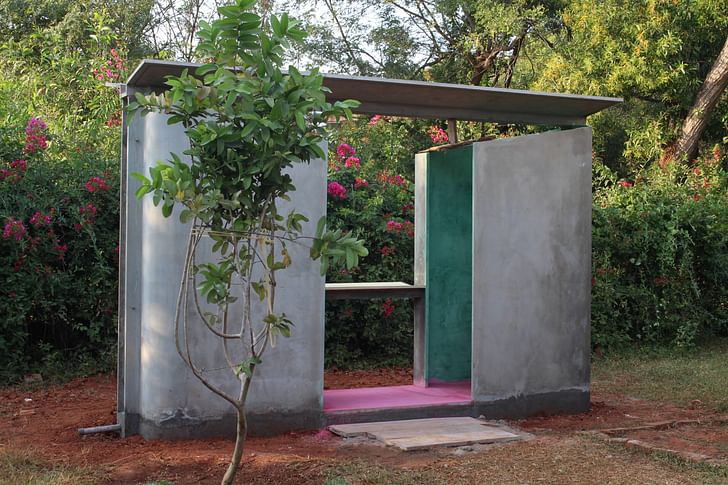
Speaking more broadly, you’re known for what might be described as a holistic or systematic approach. By that, I mean you seem as concerned with designing the economic context of a project—generating employment, for example—as the formal qualities of a building. Can you speak to your inclination towards such an approach?
To be an architect means to have the widest overview and a vision that is big enough and yet detailed enough to include everything. To synthesize various seemingly conflicting needs, is in the very nature of being an architect. All good architects are holistic, while being aware of the smallest details. Anything short of this is an incomplete architectural project, as far as I am concerned. The actual issues that architects have to embrace depend on the specific context, in place and time, and in keeping with the life it addresses. The issues you mention are the ones I have addressed within my projects as these are pressing issues in our society today.There’s just no way to meet our growing demands through current building trends without creating massive environmental and socio-economic imbalance
What is the role of research in your practice?
Since I graduated 25 years ago, we have already been at crossroads, with growing concerns about social, economic and environmental crises facing us. Buildings and the way they are built contribute significantly to these issues. We need to research new ways of building our buildings so that there is [less] environmental impact and [the] best socio-economic outcomes through appropriate choices of building materials and technologies and negotiation between hi-tech and low-tech; man-made and machine-made etc. There is no option but to have a research-oriented practice. There’s just no way to meet our growing demands through current building trends without creating massive environmental and socio-economic imbalances. Also age-old methods that were ideal cannot be applied without serious research and experimentation.
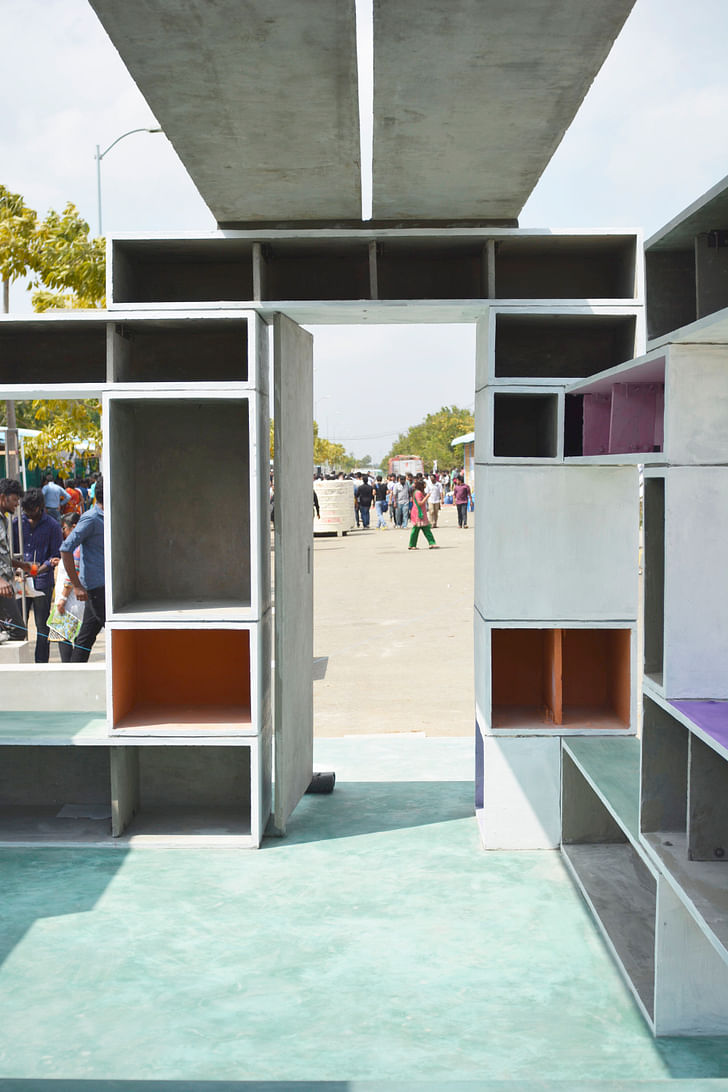
Your projects are known for being realizable within a short time period. Why is speed important in these projects?
Urbanisation is happening at an unprecedented pace. If we don’t match the pace at which needs are growing, then our solutions would be redundant and we as professionals may be grow more and more impotent. Housing cannot remain such a tedious and unachievable thing. The homeless do not have the time to dedicate a whole year or two to achieving a basic shelter. They need to liberate their time to go to work and get on with their lives, to be able to meet the other basic needs such as food, health and education.I believe that if everyone in society can share responsibility of creating a better world for all, then the task will be easier.
Do you believe architects have a responsibility to work with disadvantaged communities?
Why single out architects? I believe that if everyone in society can share responsibility of creating a better world for all, then the task will be easier. Everyone has different skills or knowledge and areas they feel particularly like contributing towards. If disadvantaged or weaker sections of society would catch up with those who are better off, it will be an advantage for all. I think the problem of creating a society with equal opportunities is a matter that concerns all of society and not only those who are disadvantaged, and so I think that a shared responsibility in addressing solutions is also in the interest of all. We are all part of a collective, and there is no advantage in remaining aloof when the collective is not doing well.

This interview is part of Archinect's special May 2016 theme, Help. Check out interviews with the curators of other pavilions at the Venice Biennale and more here!
Writer and fake architect, among other feints. Principal at Adjustments Agency. Co-founder of Encyclopedia Inc. Get in touch: nicholas@archinect.com
No Comments
Block this user
Are you sure you want to block this user and hide all related comments throughout the site?
Archinect
This is your first comment on Archinect. Your comment will be visible once approved.